
Viscount Hardinge, of Lahore and of Kings Newton in the County of Derby, is a title in the Peerage of the United Kingdom. It was created in 1846 for the soldier and Tory politician Sir Henry Hardinge. His son, the second Viscount, represented Downpatrick in Parliament. His great-great-grandson, the sixth Viscount, succeeded a distant relative as eighth Baronet, of Belle Isle in the County of Fermanagh, in 1986. This title had been created in the Baronetage of the United Kingdom 1801 for Richard Hardinge. He was the third son of Nicolas Hardinge, younger brother of Reverend Henry Hardinge and uncle of the latter's third son Henry Hardinge, 1st Viscount Hardinge. The baronetcy was created with special remainder to the heirs male of Richard Hardinge's father.
The Stronge baronetcy of Tynan was conferred in the Baronetage of the United Kingdom on 22 June 1803. The family were northern Irish landowners of Tynan Abbey, County Armagh, also possessing the residence of Lizard Manor, Aghadowey, County Londonderry.

The Anson baronetcy, of Birch Hall in the County Palatine of Lancaster, is a title in the Baronetage of the United Kingdom held by a branch of the Anson family. It was created on 30 September 1831 for William Anson. He was the third son of George Anson; his elder brothers were Thomas Anson, 1st Viscount Anson, and General Sir George Anson. Sir William was the uncle of Thomas Anson, 1st Earl of Lichfield, and Major-General George Anson and the great-nephew of George Anson, 1st Baron Anson. His grandson, the third Baronet, was a lawyer and Liberal Unionist politician. He never married and was succeeded by his nephew, the fourth Baronet. He was the only son of Frederick Arthur Anson, third son of the second Baronet. The fourth baronet drowned in the Thames on an outing of The Coterie in July 1914, after he jumped into the river encouraged by lady Diana Manners. He had not married and on his death the title passed to his first cousin, the fifth Baronet, the eldest son of Rear-Admiral Algernon Horatio Anson (1854–1913), fourth and youngest son of the second Baronet. He was killed in action in the First World War. He was unmarried and was succeeded by his younger brother, the sixth Baronet. His elder son, the seventh baronet, was a Rear-Admiral in the Royal Navy. As of 2021 the title is held by the latter's son, the eighth Baronet, who succeeded in 2018.
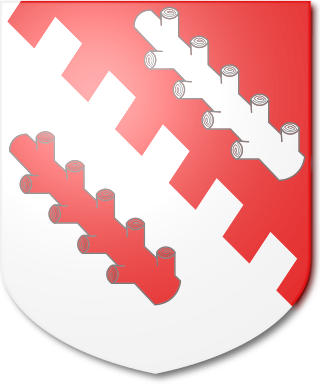
The Boyle Baronetcy, of Ockham in the Parish of Salehurst in the County of Sussex, is a title in the Baronetage of the United Kingdom. It was created on 14 December 1904 for Edward Boyle, a barrister, businessman and Conservative Member of Parliament for Taunton. His grandson, the third Baronet, was also a Conservative Member of Parliament and ultimately cabinet minister serving as Minister of Education from 1962 to 1964. He was made a life peer as Baron Boyle of Handsworth, of Salehurst in the County of Sussex, in 1970 and became vice-chancellor of the University of Leeds in the same year. The life peerage became extinct on his death in 1981 and he was succeeded in the baronetcy by his younger brother, the fourth Baronet. As of 2023 the title is held by the latter's eldest son, the fifth Baronet, who succeeded in 1983.
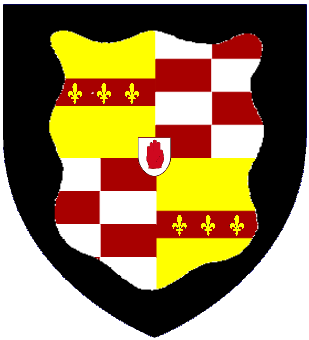
The Barrett-Lennard Baronetcy, of Belhus in the County of Essex, is a title in the Baronetage of the United Kingdom. It was created on 30 June 1801 for Thomas Barrett-Lennard, subsequently Member of Parliament for Essex South. He was the illegitimate son and testamentary heir of Thomas Barrett-Lennard, 17th Baron Dacre. He was succeeded by his grandson, the second Baronet, the son of Thomas Barrett-Lennard, Member of Parliament for Maldon. His son, the third Baronet, was childless and was succeeded by his younger brother, the fourth Baronet. This line of the family failed on the death in 1977 of his son, the fifth Baronet, who died without male issue. The late Baronet was succeeded by his third cousin once removed, the sixth Baronet. He was the son of Sir Fiennes Cecil Arthur Barrett-Lennard, Chief Justice of Jamaica, son of Captain Thomas George Barrett-Lennard, son of the first marriage of George Barrett-Lennard, son of John Barrett-Lennard, second son of the first Baronet. The sixth Baronet was a Catholic clergyman. As of 2014 the title is held by his second cousin, the seventh Baronet, who succeeded in 2007. He is the grandson of Trenchard Barrett-Lennard, son of the aforementioned George Lennard-Barrett by his second marriage. As of 31 December 2013 the present Baronet has not successfully proven his succession and is therefore not on the Official Roll of the Baronetage, with the baronetcy considered vacant since 2007.
The Greenaway Baronetcy, of Coombe in the County of Surrey, is a title in the Baronetage of the United Kingdom. It was created on 23 October 1933 for Percy Walter Greenaway. He was Chairman of Daniel Greenaway & Sons, printers and stationers, and served as Lord Mayor of London from 1932 to 1933. As of 2015 the title is held by his great-grandson, the fourth Baronet, who succeeded his father in that year.

The Chance Baronetcy, of Grand Avenue in the parish of Hove in the County of Sussex, is a title in the Baronetage of the United Kingdom. It was created on 19 June 1900 for James Timmins Chance, a grandson of William Chance one of the Chance brothers who started the family business in 1771. He became head of Chance Brothers and Company. He was High Sheriff of Staffordshire in 1868.

The Briscoe Baronetcy, of Bourn Hall, in the Parish of Bourn, in the County of Cambridge, is a title in the Baronetage of the United Kingdom. It was created on 12 July 1910 for John James Briscoe. He was a County Alderman, a Justice of the Peace and Deputy Lieutenant for Cambridgeshire. His eldest son, the second Baronet, died childless and was succeeded by his younger brother, the third Baronet. As of 2023 the title is held by the latter's great-grandson, the sixth Baronet, who succeeded from birth in 1994, his father having died earlier that year.
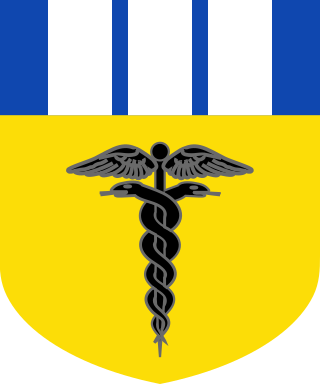
The Brunton Baronetcy, of Stratford Place in St Marylebone, is a title in the Baronetage of the United Kingdom. It was created on 17 July 1908 for the physician Lauder Brunton. It is now considered dormant.

The Broadbent Baronetcy, of Longwood in the Parish of Huddersfield in the West Riding of the County of York, and of Brook Street, in the Parish of St George Hanover Square in the County of London, is a title in the Baronetage of the United Kingdom. It was created on 10 August 1893 for the noted physician William Broadbent. The title descended from father to son until the death of his grandson, the third Baronet, in 1987. The late Baronet was succeeded by his first cousin once removed, the fourth Baronet. He was the grandson of Walter Broadbent, third son of the first Baronet.
There have been four baronetcies created for persons with the surname Bell, all in the Baronetage of the United Kingdom. One creation is extant as of 2007.
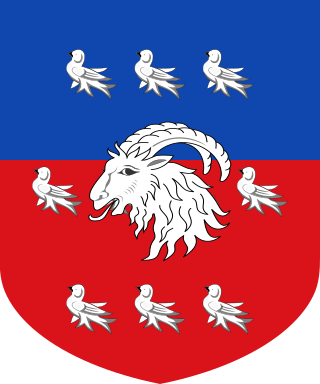
The Boord Baronetcy, of Wakehurst Place in the County of Sussex, is a title in the Baronetage of the United Kingdom. It was created on 18 February 1896 for the Conservative politician Thomas Boord. His eldest son, the second Baronet, died unmarried in 1928 and was succeeded by his nephew, the third Baronet. He was the son of Alexander Edgar Boord, third son of the first Baronet. The third Baronet's eldest son, the fourth Baronet, succeeded in 1975. On his death in 2019, the title passed to his nephew Andrew, an Istanbul-based translator and business development consultant.

The Bonham Baronetcy, of Malmesbury in the County of Wiltshire is a title in the Baronetage of the United Kingdom. It was created on 27 November 1852 for the colonial administrator George Bonham. He was Governor of Hong Kong from 1848 to 1854.
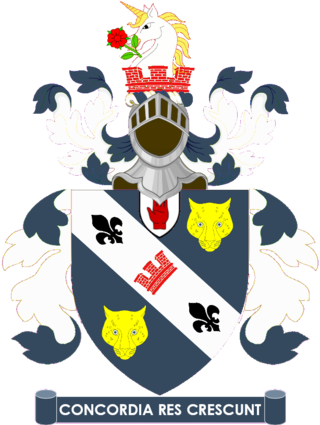
The Bromhead Baronetcy, of Thurlby Hall in the County of Lincoln, is a title in the Baronetage of the United Kingdom. It was created on 19 February 1806 for the soldier Lieutenant-General Gonville Bromhead. His eldest son, the second Baronet, was a mathematician. He died unmarried and was succeeded by his younger brother, the third Baronet. He was a Major in the Army and fought at the Battle of Waterloo. His eldest son, the fourth Baronet, was a Colonel in the Indian Staff Corps. He was succeeded by his grandson, the fifth Baronet. He was a Lieutenant-Colonel in the Indian Army. As of 2007 the title is held by his son, the sixth Baronet, who succeeded in 1981. However he does not use his title.

The Millais Baronetcy, of Palace Gate in Kensington in the County of Middlesex and of St Ouen in Jersey, is a title in the Baronetage of the United Kingdom. It was created on 16 July 1885 for the painter and illustrator John Everett Millais. He was one of the founders of the Pre-Raphaelite Brotherhood. As of 2014 the title is held by his great-grandson, the sixth Baronet, who succeeded his father in 1992.

The Walsham Baronetcy, of Knill Court in the County of Hereford, was a title in the Baronetage of the United Kingdom. It was created on 30 September 1831 for John James Walsham. He received the baronetcy as the eldest co-heir and representative of Sir Thomas Morgan, 1st Baronet. The second Baronet was Envoy Extraordinary and Minister Plenipotentiary to China from 1885 to 1892 and to Romania from 1892 to 1893. The fourth Baronet was a rear admiral in the Royal Navy.

The Pigott Baronetcy, of Knapton in the Queen's County, is a title in the Baronetage of the United Kingdom. It was created on 3 October 1808, for George Pigott. Pigott was the son of Thomas Pigott, a major general in the army and Member of Parliament.

The Shiffner Baronetcy, of Coombe in the County of Sussex, is a title in the Baronetage of the United Kingdom. It was created on 16 December 1818 for George Shiffner, Member of Parliament for Lewes from 1812 to 1826.

The Fletcher, later Boughey Baronetcy, of Newcastle-under-Lyme and of Betley both in the County of Stafford, is a title in the Baronetage of Great Britain. It was created on 24 August 1798 for Thomas Fletcher, of Betley Court, Staffordshire, High Sheriff of Staffordshire in 1783 and 1789 and Deputy Lieutenant of the county. He was the husband of Elizabeth Fenton, granddaughter of George Boughey, of Audley, Staffordshire whose will provided for his great-grandson to inherit the Audley estate.
The Sullivan baronetcy, of Thames Ditton in the County of Surrey, was created in the Baronetage of the United Kingdom on 22 May 1804 for the writer and MP Richard Sullivan. The third and sixth Baronets were Admirals in the Royal Navy. The ninth holder of the baronetcy did not use his title; as of 2023 the Official Roll marked the baronetcy as vacant.
















